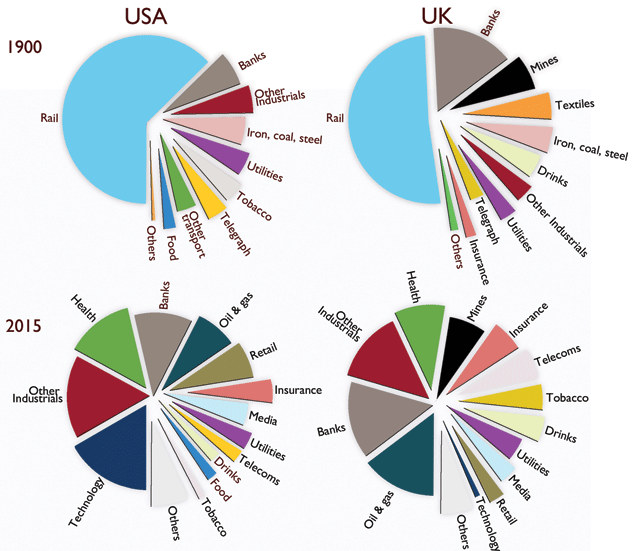Investing for the long run is important – but there's nothing wrong with a little speculation
Shunning short-term speculation in favour of investing for the long term is too simplistic, says David C Stevenson – and that has big implications for the funds you choose.

Conventional wisdom shuns short-term speculation in favour of long-term investing. But that might be too simplistic a picture and that has big implications for the funds you choose.
Most investors claim to be investing for the long run. But in reality, we often allow ourselves to be overwhelmed by short-term noise. The conventional wisdom says that this is a bad thing that long-term investing is good, while speculating in the short run is a mistake. And my gut feeling is that the conventional wisdom is right about this.
Yet the data paint a far more nuanced picture and that has big implications for the funds you might decide to own.
MoneyWeek
Subscribe to MoneyWeek today and get your first six magazine issues absolutely FREE

Sign up to Money Morning
Don't miss the latest investment and personal finances news, market analysis, plus money-saving tips with our free twice-daily newsletter
Don't miss the latest investment and personal finances news, market analysis, plus money-saving tips with our free twice-daily newsletter
These musings on the nature of time and investing have been prompted by the publication of the latest Credit Suisse Yearbook, which is writtenby London Business School academics most notably, Professors Paul Marsh and Elroy Dimson. The rather colourful pie charts below taken from the yearbook tell a remarkable story about the changing nature of stockmarkets.

(Source: Elroy Dimson, Paul Marsh and Mike Staunton, Triumph of the Optimists)
A century of drastic change
They show a snapshot of the main US and UK markets in 1900, and another of markets today 115 years later. It's no surprise that things have changed, but it's worth taking a moment to consider just how significant the change has been. Whole industries have vanished who's to say that our current tech titans won't go the same way?
The rail industry accounted for an extraordinary chunk of the market on each side of the Atlantic. According to the report, "of the US firms listed in 1900, more than 80% of their value was in industries that are today small or extinct; the UK figure is 65%".
Other much-diminished industries include textiles, iron, coal and steel, all of which "have moved to lower-cost locations in the emerging world".
Obviously, some businesses haven't changed as much as the authors observe, banking and insurance industries have continued to be important. "Similarly, industries such as food, beverages (including alcohol), tobacco and utilities were present in 1900, just as they are today. And in the UK, quoted mining firms were important in 1900, just as they are in London today."
Value vs momentum both can work
So how can you apply this lesson from history that sectors go in and out of favour, and occasionally pretty much vanish altogether to managing a fund, or even selecting individual stocks? The professors suggest one option, a "value" method whereby you "buy low, sell high".
"One way of leaning against any tendency to overvalue the new and undervalue the old is to follow an industry value rotation strategy. This has historically generated a premium." In other words, you buy the cheapest sectors, so that you're always investing in the least-popular industries, and you avoid the most expensive ones.
However, they also note that chasing short-term performance a momentum strategy appears to be even more effective. Say that since 1900 you had bought the previous year's best-performing industries and shorted the bottom fifth of the market. You'd have made an annualised return of 6.1% in the US, and 5.3% in the UK.
"Before costs, US investors would have grown 870 times richer from buying winning industries rather than losers." So in simple terms at least, being short-termist can work too.
But is there an easy way for investors to implement either of these strategies?In the bad old days, you'd have had to buy all the individual stocks in whichever sector you wanted for your portfolio both expensive and tedious. But the rise of exchange-traded funds (ETFs) means we now have convenient ways to follow these strategies.
In particular, the ETF industry has embraced "smart beta". This allows you to filter stocks or sectors based on fundamental measures, such as value, or technical measures, such as share-price strength relative to the wider market. Morningstar data suggest that nearly a fifth of all money held in exchange-traded products at the end of last year was in smart beta ETFs up from 10% in 2010.
Fund providers are now working on ETFs that allow private investors to access slightly more complex long/short strategies. France-based ETF provider Ossiam is launching the Shiller Barclays Cape Sector Value Europe ETF (LSE: CAPE). Merryn Somerset Webb mentioned this ETF in the magazine last week. To recap, it uses "the cyclically adjusted price-to-earnings (Cape) ratio as a valuation driver in a sector rotational strategy". There is the germ of a brilliant idea lurking in here.
Picking Europe's cheapest sectors
The key insight is that over the longrun (if history is any guide), the best stocks to buy are cheap, value stocks that have fallen out of favour. The classic measure for 'value' is to look at the price/earnings (p/e) ratio this divides the share price by earnings per share. In simplistic terms, the lower the p/e, the cheaper the stock. But p/e ratios vary over time, largely because profits go up and down along with the business cycle. So to get a sensible reading, you have to take a long-term perspective.
That's where the Cape ratio developed and popularised by Professor Robert Shiller comes in. The Cape ratio looks at the p/e 'smoothed out' over ten years (by taking average earnings over that period) to reveal the 'true value' of the stock relative to a benchmark, such as the S&P 500 index (in the US) or the FTSE 100.
The Shiller Barclays ETF applies the Cape measure at a sector level, and buys the cheapest sectors in European markets. This strategy echoes the first suggested by professors Marsh and Dimson the value rotation strategy.
As Ossiam puts it, "the strategy aims to avoid overvalued sectors as well as eliminating potential value traps, creating a sector portfolio with a value bias that helps to pick the right industries at the right point in time".(It also throws a bit of momentum in there by tossing out the "value" sector with the least momentum behind it.)
I reckon the timing for this launch is perfect my own view is that eurozone equities are the place to be for the next few years, especially as Europe is reasonably cheap at the regional level. But it's not just that now looks like it might be a good time to focus on value too.
The return of value
Research guru Paul Jackson (who works for Ossiam's rival, Source) has done some number-crunching on Europe recently. Till now, 'growth' stocks (which are more likely to be go-go momentum businesses) had outperformed 'value' in the eurozone equity market since the onset of the financial crisis. That's little wonder.
Until very recently, Europe had seen falling bonds yields and a rising euro. Falling bond yields should be good for growth stocks, and small companies in the euro area should do better than large companies when the euro strengthens (as they are less dependent on exports).
But this has changed now. "The euro has already turned down and bond yields will struggle to go much lower," says Jackson. So "large value companies should perhaps be preferred". I suspect Jackson is right on Europe the smart money will focus on the more liquid, large-cap names, but you also need to have a value bias.
That's where the Ossiam ETF could come in handy, as it automatically favours the cheaper, bigger names against the riskier small caps which makes it a great way to play the long-term value game. Add in a total expense ratio of 0.65% a year, and you might have the perfect way of playing a eurozone recovery.
If you think this all much too focused on long-term thinking, then maybe momentum stocks are the way to go. If so, look instead at the iShares MSCI Europe Momentum ETF (LSE: IEFM) this is likely to favour the go-go sectors that investors currently rave over. The TER is a very reasonable 0.25%.
Watch Merryn's interview with Professor Robert Shiller.
Get the latest financial news, insights and expert analysis from our award-winning MoneyWeek team, to help you understand what really matters when it comes to your finances.

David Stevenson has been writing the Financial Times Adventurous Investor column for nearly 15 years and is also a regular columnist for Citywire.
He writes his own widely read Adventurous Investor SubStack newsletter at davidstevenson.substack.com
David has also had a successful career as a media entrepreneur setting up the big European fintech news and event outfit www.altfi.com as well as www.etfstream.com in the asset management space.
Before that, he was a founding partner in the Rocket Science Group, a successful corporate comms business.
David has also written a number of books on investing, funds, ETFs, and stock picking and is currently a non-executive director on a number of stockmarket-listed funds including Gresham House Energy Storage and the Aurora Investment Trust.
In what remains of his spare time he is a presiding justice on the Southampton magistrates bench.
-
 Why UK investors are backing British stocks in 2026
Why UK investors are backing British stocks in 2026The UK stock market may be lacking fashionable technology shares but investors are keen to buy British next year
-
 UK inflation live: did inflation fall in November?
UK inflation live: did inflation fall in November?The ONS releases inflation data for November tomorrow (17 December). Has inflation continued its downward trend?